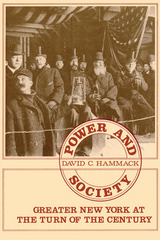2 books about To 1898

Not of Pure Blood
The Free People of Color and Racial Prejudice in Nineteenth-Century Puerto Rico
Jay Kinsbruner
Duke University Press, 1996
Countering the popular misconception that racial discrimination has largely not existed in Puerto Rico, Jay Kinsbruner’s Not of Pure Blood shows that racial prejudice has long had an insidious effect on Puerto Rican society. Kinsbruner’s study focuses on the free people of color—those of African descent who were considered nonwhite but were legally free during slavery—in order to explore the nature of racial prejudice in nineteenth-century Puerto Rico. In considering the consequences of these nineteenth-century attitudes on twentieth-century Puerto Rico, Kinsbruner suggests that racial discrimination continues to limit opportunities for people of color.
Following a discussion of Puerto Rican racial prejudice in historical perspective, Kinsbruner describes residential patterns, marriages, births, deaths, occupations, and family and household matters to demonstrate that free people of color were a disadvantaged community whose political, social, and economic status was diminished by racism. He analyzes the complexities and contradictions of Puerto Rican racial prejudice and discrimination, explains the subtleties of “shade discrimination,” and examines the profoundly negative impact on race relations of the U.S. occupation of the island following the Spanish American War.
Looking behind the myth of Puerto Rican racial equity, Not of Pure Blood will be of interest to specialists in Caribbean studies, Puerto Rican history, and Latin America studies, and to scholars in a variety of fields investigating questions of racism and discrimination.
Following a discussion of Puerto Rican racial prejudice in historical perspective, Kinsbruner describes residential patterns, marriages, births, deaths, occupations, and family and household matters to demonstrate that free people of color were a disadvantaged community whose political, social, and economic status was diminished by racism. He analyzes the complexities and contradictions of Puerto Rican racial prejudice and discrimination, explains the subtleties of “shade discrimination,” and examines the profoundly negative impact on race relations of the U.S. occupation of the island following the Spanish American War.
Looking behind the myth of Puerto Rican racial equity, Not of Pure Blood will be of interest to specialists in Caribbean studies, Puerto Rican history, and Latin America studies, and to scholars in a variety of fields investigating questions of racism and discrimination.
[more]

Power and Society in Greater NY
David C. Hammack
Russell Sage Foundation, 1982
Who has ruled New York? Has power become more concentrated—or more widely and democratically dispersed—in American cities over the past one hundred years? How did New York come to have its modern physical and institutional shape? Focusing on the period when New York City was transformed from a nineteenth-century mercantile center to a modern metropolis, David C. Hammack offers an entirely new view of the history of power and public policy in the nation's largest urban community. Opening with a fresh and original interpretation of the metropolitan region's economic and social history between 1890 and 1910, Hammack goes on to show how various population groups used their economic, social, cultural, and political resources to shape the decisions that created the modern city. As New York grew in size and complexity, its economic and social interests were forced to compete and form alliances. No single group—not even the wealthy—was able to exercise continuing control of urban policy. Building on his account of this interplay among numerous elites, Hammack concludes with a new interpretation of the history of power in New York and other American cities between 1890 and 1950. This book makes a major contribution to the study of community power, of urban and regional history, and of public policy. And by taking the meaning and distribution of power as his theme, Hammack is able to reintegrate economic, social, and political history in a rich and comprehensive work. "Lucid, instructive, and discerning....The most commanding analysis of its subject that I know." —John M. Blum, professor of history, Yale University "A powerful and persuasive treatment of a marvelous subject." —Nelson W. Polsby, professor of political science, University of California, Berkeley
[more]
READERS
Browse our collection.
PUBLISHERS
See BiblioVault's publisher services.
STUDENT SERVICES
Files for college accessibility offices.
UChicago Accessibility Resources
home | accessibility | search | about | contact us
BiblioVault ® 2001 - 2024
The University of Chicago Press









